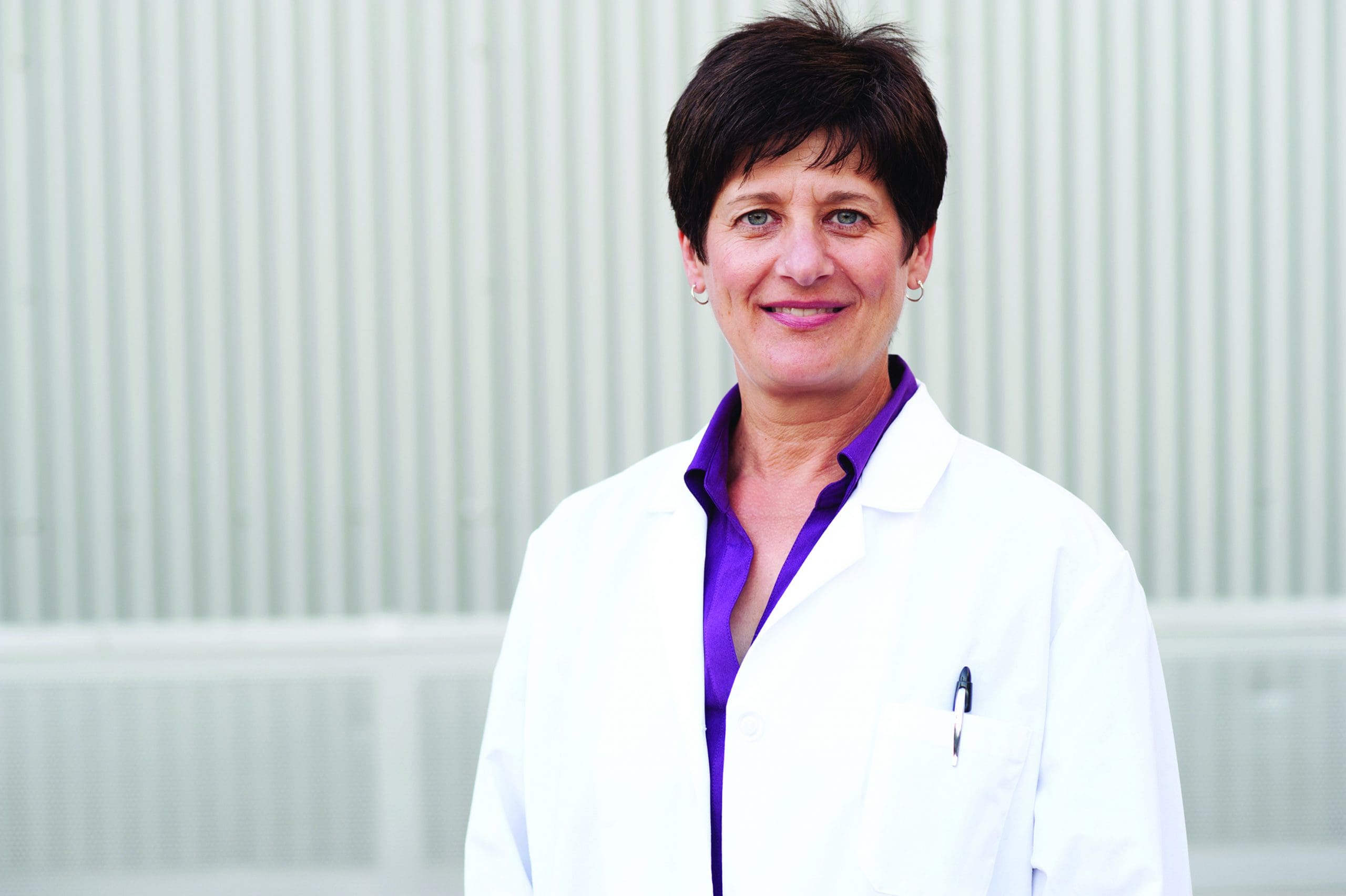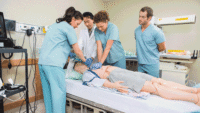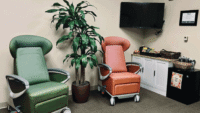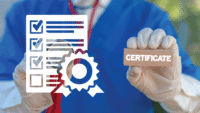Use the Magnet model components as a framework for meeting a crisis.
Takeaways:
- Nursing leadership during the COVID-19 pandemic requires all hands on deck.
- The Magnet® Model can serve as a guide during the pandemic.
- The Magnet program director role must shift during the pandemic to support clinical nurses.
In organizations across the country, the COVID-19 pandemic has disrupted patient care and hospital operations at every level, requiring rapid retooling of structures and processes to address the crisis. A New York City integrated academic healthcare delivery system, consisting of 10 campuses, is using the American Nurses Credentialing Center (ANCC) Magnet® model components (transformational leadership; structural empowerment; exemplary professional practice; and new knowledge, innovations, and improvements) as a guiding framework through the pandemic. The Magnet model drives organizations to describe and demonstrate empirical outcomes focused on these components.
With the pandemic imminent, Magnet program directors (MPDs) assessed risk to the Magnet culture and identified activities necessary to maintain it: clinical nurses having a voice and being involved in decision making, a healthy work environment, employee and patient safety, transformational leaders successfully guiding the team and advocating for resources, innovation, evidence-based practice, delivering culturally and socially sensitive care, and mentoring and succession planning.
The MPDs’ role quickly shifted from leading the Magnet journey to supporting nursing teams. MPDs at each campus work alongside other nurse leaders to create an inclusive and engaging environment and reconfigure how the teamwork, courage, and resilience of nurses and the interprofessional team are recognized. In addition, MPDs have remained aware of the unfolding initiatives that can be used to describe and demonstrate Magnet narratives.
Transformational leadership
Our organization’s culture, combined with the Magnet culture, is key to our success. Transformational leadership by the chief nurse executive, chief nursing officers (CNOs), and nurses at all levels is essential. As the organization began to experience unrelenting change
associated with the pandemic, nurse leaders embraced it, reprioritized goals, and focused on measures necessary to keep employees and patients safe. Professional governance shifted from formal meetings to robust pathways for nurses to advocate for needs and concerns. For example, we use direct messaging via specially created and staffed email accounts to expedite and escalate concerns about personal protective equipment (PPE), scrubs, parking, housing, and meals.
MPDs in action
Working alongside nurse leaders throughout the organization, MPDs rounded on clinical units to ensure nurses felt supported. During these rounds, MPDs were available to answer questions and report needs back to executive leaders. The MPDs
advocated for clinical nurses, ensuring their needs were heard and their safety was a priority during the pandemic.
Structural empowerment
Nurse leaders cultivated resilience by embracing flexibility, providing support, and finding coping resources for the frontline nurses and teams. To build competencies and confidence for practicing in newly opened and repurposed practice settings, nurse leaders optimized staffing structures and strengthened cross-training and mentoring for nurses working in unfamiliar patient populations and specialty areas. Executive leaders streamed local, state, and national live news updates to communicate changes, statistics, education, and status reports. This robust communication sharing instilled calm, confidence, and pride by connecting nursing staff work to improving people’s lives and recognizing the contributions and sacrifices among the healthcare system family.
MPDs in action
MPDs collaborate with staff in the nursing professional development department to provide input into cross-training redeployed nurses and influence curriculum and support. For example, MPDs contribute to hospital orientation for external agency nurses, working with educators to accelerate onboarding. In addition, MPDs infuse elements of the Magnet model and nursing excellence into the expedited orientations by promoting shared decision making and team building whenever possible.
Exemplary professional practice
In response to the extraordinary need for critical care beds, leaders swiftly activated alternative staffing plans and implemented contingency capacity strategies, which included suspending elective surgeries, procedures, and office visits and reassigning employees to areas with identified staffing shortages or to newly created COVID-specific units. Some system campuses temporarily closed selected services, such as pediatrics and psychiatry, to increase capacity for adult critical care patients. Through all these changes, guidelines for adult tracheostomy placement and care, aerosol-generating procedures, and patient proning protocols evolved. In the midst of challenging social distancing and restricted visitation policies, clinical nurses are steadfast and agile, implementing daily changes. In addition, nurse leaders work with clinical nurses to ensure competence as needed when enacting contingency staffing plans.
MPDs in action
MPDs serve as clinical advisors in a number of command centers throughout the organization. In collaboration with CNOs, MPDs advocate for nurses to be at the decision-making table during the crisis. They work in collaboration with interprofessional teams, provide insight through the nursing lens, and serve as active decision makers at critical huddles and meetings. For example, when a decision was made to expand critical care capabilities, the MPDs ensured that nurses at all levels of the organization were part of the planning so the teams could safely triple or quadruple the critical care capacity as needed.
New knowledge, innovations, and improvements
Structures and processes that nurses relied on to accomplish their work have been interrupted during the pandemic, requiring ingenuity and innovation. Innovations to ensure safe patient care include alternate staffing models, specialized interprofessional teams (such as a proning team), temporary intensive care units on medical-surgical units and in operating rooms, a shift to team care delivery models, and PPE conservation measures. This is uncharted territory and nurse leaders rely on current evidence-based practice guidelines to make decisions affecting patient care.
MPDs in action
MPDs collaborate with nursing leadership to continue professional governance meetings and adjust to new ways of doing business by hosting meetings on a cloud-based platform for video, voice, content sharing, and chats. They worked with the information technology department to enhance desktop computers so nurse teams can attend professional governance and other meetings virtually. This gives nurses a sense of normalcy and reinforces the importance of shared decision making and communication.
In addition, MPDs focus on disseminating key strategies, redesigning workflows, and leveraging resources for team resilience. This includes sharing real-time best practices across the 10 campus locations and with external audiences. For example, workflow redesign was necessary to provide care for the surge of critically ill patients entering the healthcare system.
Lessons learned
The MPDs learned lessons—about setting priorities, speaking up, listening and observing, and practicing self-care and reflection—which will inform future decisions and plans for leading an organization to excellence during a crisis. As the COVID-19 pandemic rages on, MPDs remain focused on these skills to ensure their own resilience, as well as that of the entire nursing team. Leveraging the unique skill set of the MPDs has provided another level of leadership to help guide clinical nurses through this pandemic. (See Lessons for the future.)
Lessons for the future
The Magnet® program directors (MPDs) at a multi-campus healthcare system learned many lessons during the COVID-19 pandemic that will help guide them during future crises.
Lesson 1: Set priorities
- Stay calm and lead on.
- Determine Magnet-related “need to do” vs. “nice to do.”
- For organizations submitting their Magnet application in a year or less, the MPD should continue to focus on writing the Magnet document.
- For organizations submitting their applications beyond 1 year, the MPD should shift priorities to current crisis needs, including staffing, managing inventory, and opening/expanding units.
- Manage facts, perceptions, and thoughts related to the crisis by ensuring accurate updates are shared with the team.
- Use tools at your disposal to provide critical updates, such as video chatting, secure text messaging, and other electronic forms of communication.
- As information changes during the crisis, use technology to ensure everyone on the team is current.
Lesson 2: Speak up
- Promote nurses at all levels to speak up early and often about opportunities and successes throughout the crisis.
- Leverage organization-wide use of a secure, cloud-based platform for video, voice, content sharing, and chats for robust communication.
- Empower clinical nurses and nurse leaders to propose innovative ideas for managing inventory, crafting staffing models, and fulfilling basic needs such as food, shelter, transportation, and childcare.
Lesson 3: Listen and observe
- Embrace change as constant during a crisis and accept that standard work may not exist.
- Listen and observe nurses’ work to capture narratives for the Magnet document.
- Encourage questions during meetings, provide time for discussion, and observe teams when rounding on units.
- Disseminate knowledge gathered during observations and encourage teams to trial innovative initiatives.
Lesson 4: Practice self-care and reflection
- Provide opportunities for teams to discuss events during a crisis with pastoral care and psychiatric team members, including time for teams to decompress.
- Recognize teams’ contributions during a crisis.
- Deliver basic necessities, such as meals, and establish recharge/respite areas for team members to take a break away from patient care.
- Acquire resources for at-home or off-site self-care and reflection, such as yoga, meditation, and exercise programs free of charge.
- Promote self-care by ensuring clinical team members have time for respite.
Unwavering nursing excellence
Advancing nursing excellence is ongoing—not once every 4 years when the formal Magnet document is submitted—and it shouldn’t be pushed aside during a pandemic or other crisis. Instead, the Magnet model components should be used as a framework for meeting the crisis. The COVID-19 pandemic has presented many new challenges, and nurse leaders have relied on the Magnet culture to navigate them. The MPDs’ primary focus has changed during the pandemic, but it hasn’t wavered from ensuring that nursing excellence is captured, described, and demonstrated. AN
The authors work at the NewYork-Presbyterian Healthcare System. Nicole M. Hartman is the Magnet program Director at NewYork-Presbyterian Columbia University Irving Medical Center/Allen Hospital/Ambulatory Care Network West in New York City. Michele P. Holskey is a per diem Magnet consultant at NewYork-Presbyterian Hospital in New York City. Margaret Adler is the Magnet program director at NewYork-Presbyterian Hudson Valley Hospital in Cortlandt Manor. Beverly S. Karas-Irwin is director of nursing excellence/Magnet recognition at NewYork-Presbyterian Hospital in New York City. Lacey Lisner is the Magnet program director at NewYork-Presbyterian Morgan Stanley Children’s Hospital in New York City. Rhoda Redulla is the Magnet program director at NewYork-Presbyterian Weill Cornell/Cohen/Ambulatory Care Network in New York City. Avis Russ is the former Magnet program director at NewYork-Presbyterian Westchester Behavioral Health Center & NewYork-Presbyterian Weill Cornell Medical Center Psychiatry Program in White Plains. Christina Sansolo is the Magnet program director and nurse residency program coordinator at NewYork-Presbyterian Brooklyn Methodist Hospital in Brooklyn. Alexa N. Shelley is the Magnet program director at NewYork-Presbyterian Lower Manhattan Hospital in New York City. Patricia Tischler is director of nursing and nurse residency coordinator at NewYork-Presbyterian Queens in Flushing.
References
American Nurses Credentialing Center. 2019 Magnet® Application Manual. Silver Spring, MD: American Nurses Credentialing Center; 2017.
American Nurses Credentialing Center. ANCC Magnet Recognition Program®. nursingworld.org/organizational-programs/magnet
Prado-Inzerillo M, Clavelle JT, Fitzpatrick JJ. Leadership practices and engagement among Magnet® hospital chief nursing officers. J Nurs Adm. 2018;48(10):502-7.


















